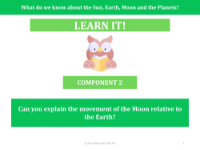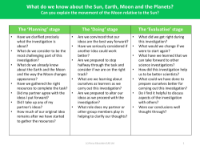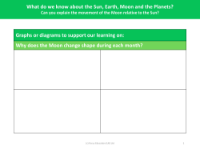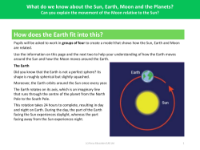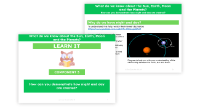How can you explain the movement of the Moon relative to the Earth? - Teacher notes

Science Resource Description
Understanding the movement of the Moon in relation to the Earth is a fascinating aspect of astronomy that is often introduced to pupils in their early years of education. To facilitate this learning, pupils are initially provided with foundational knowledge about the dynamic relationship between these two celestial bodies. They are encouraged to watch an educational video clip that visually explains the concept, serving as a precursor to their own hands-on experimentation.
Following the video, pupils are guided to use a structured approach—planning, doing, and evaluating—to design and conduct their own experiments that mimic the orbital mechanics of the Earth and Moon system. Through practical activities, they are able to demonstrate the Earth's orbit around the Sun and the Moon's orbit around the Earth. Building upon their previous experiences from Year 3, pupils are challenged to develop a more sophisticated, three-dimensional representation of these movements. This experiential learning process not only deepens their understanding of the Earth-Moon system but also prompts them to question and explore the wider context of the Sun, Earth, Moon, and other planets in our solar system. By engaging in these activities, pupils learn to articulate the Moon's movement relative to both the Earth and the Sun, enhancing their comprehension of the intricate dance of celestial objects in space.
